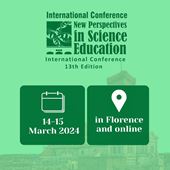Integrating the STEM Approach in In-Service Teacher Education. A Practical Example.
Carmen Julve-Tiestos, CIFE Juan de Lanuza - University of Zaragoza (Spain)
Alberto Arnal-Bailera, University of Zaragoza. (Spain)
Abstract
Integrating the STEM Approach into In-Service Teacher Education requires a focus on professional development, alignment with other reform initiatives, high-quality instruction, active teacher involvement, the provision of appropriate resources, and the promotion of a school culture that values innovation and interdisciplinary collaboration [1]. This training is essential for preparing educators to address contemporary educational challenges with increasingly integrated and rigorous curricula, and to provide students with specific competencies in the scientific, technological, and mathematical domains.
In our country, the initial training that teachers receive in STEM disciplines during their initial education is deficient, at the very least in terms of ECTS credits, both in the scientific and didactic domains [2]. Consequently, weaknesses become evident when these former students become in service teachers and new curricula require the integration of various scientific and mathematical areas in Primary Education.
This paper presents an exploration of an innovative educational situation in the realm of STEM education, which was conducted at a teacher-training center situated in Spain. The focal point of this educational undertaking revolved around the design and construction of a parachute apparatus designed to safeguard an egg during a free fall from an approximate height of 10 meters. Subsequent to the culmination of this technological design and construction phase, the training program underwent a transformation, directing its emphasis towards elucidating the significance of the integration of core physics principles, such as the understanding of friction and gravitational forces from a scientific standpoint, as well as mathematical principles, such as the comprehension of absolute and relative error in measurement from a mathematical perspective, in the formulation of a pedagogically sound STEM-oriented activity.
|
Keywords |
STEM, In-service teachers, innovation, experiment |
|
References |
|
 New Perspectives in Science Education
New Perspectives in Science Education





























